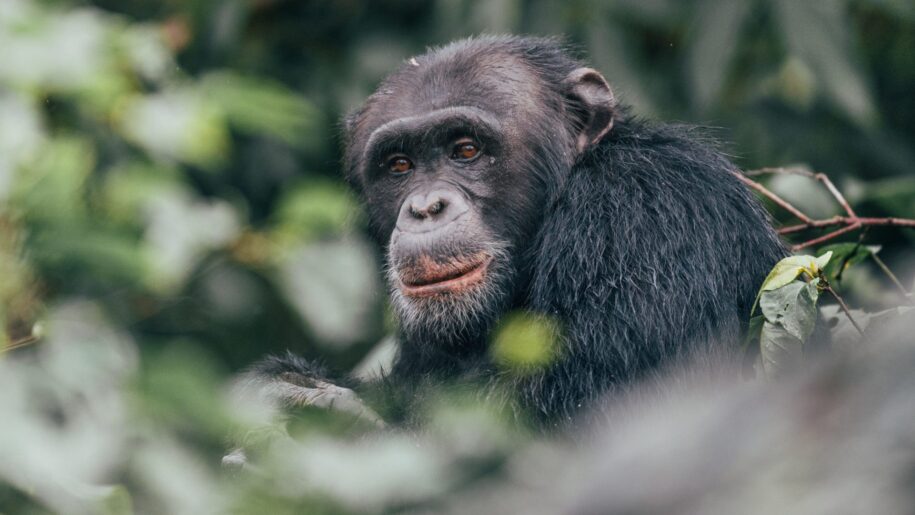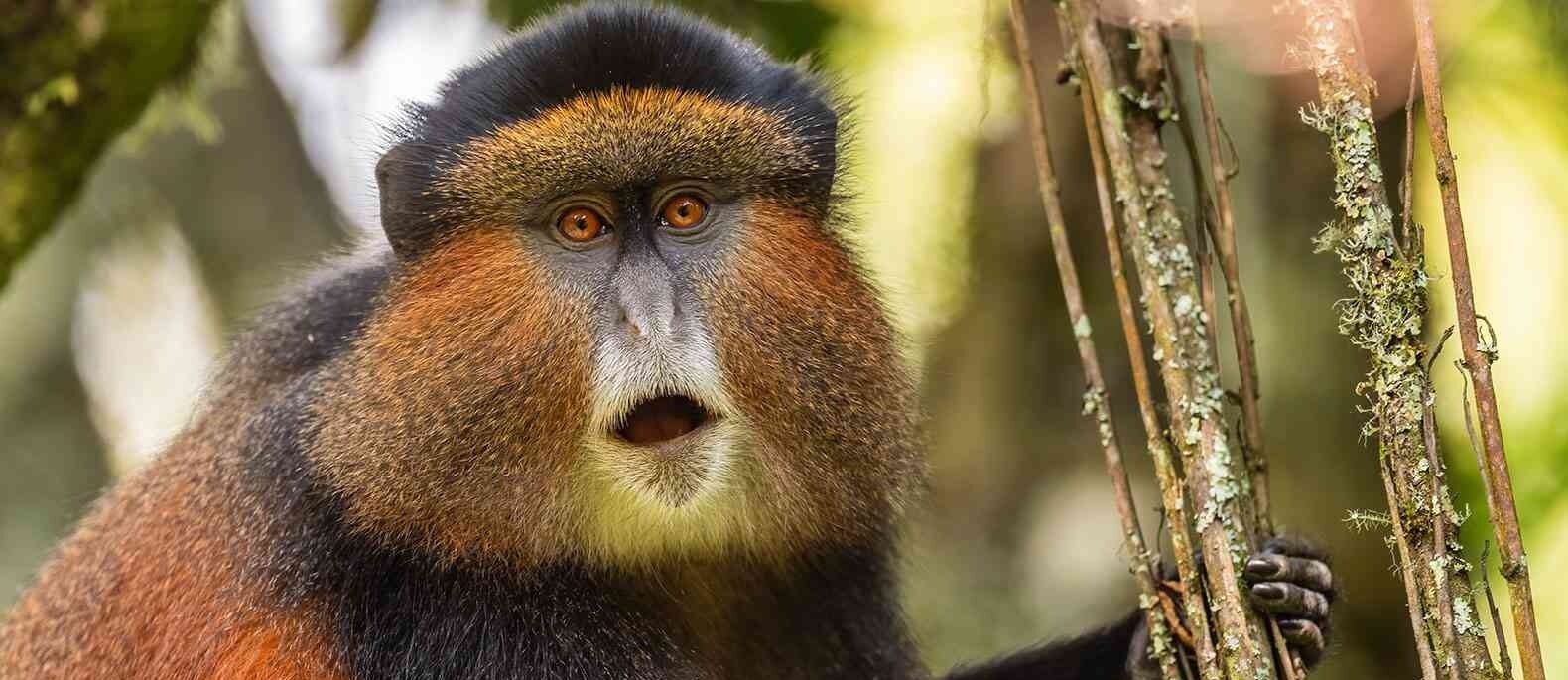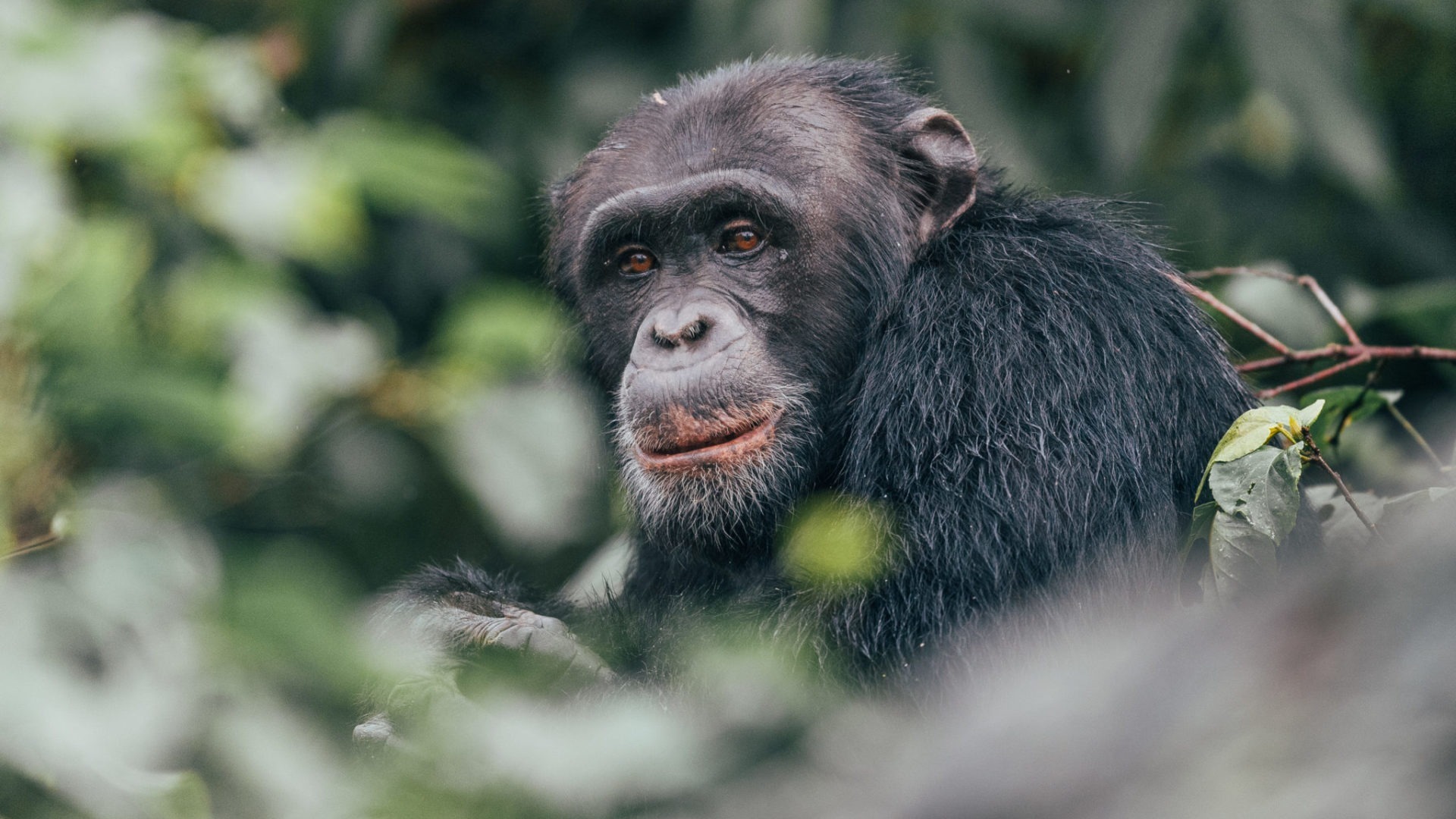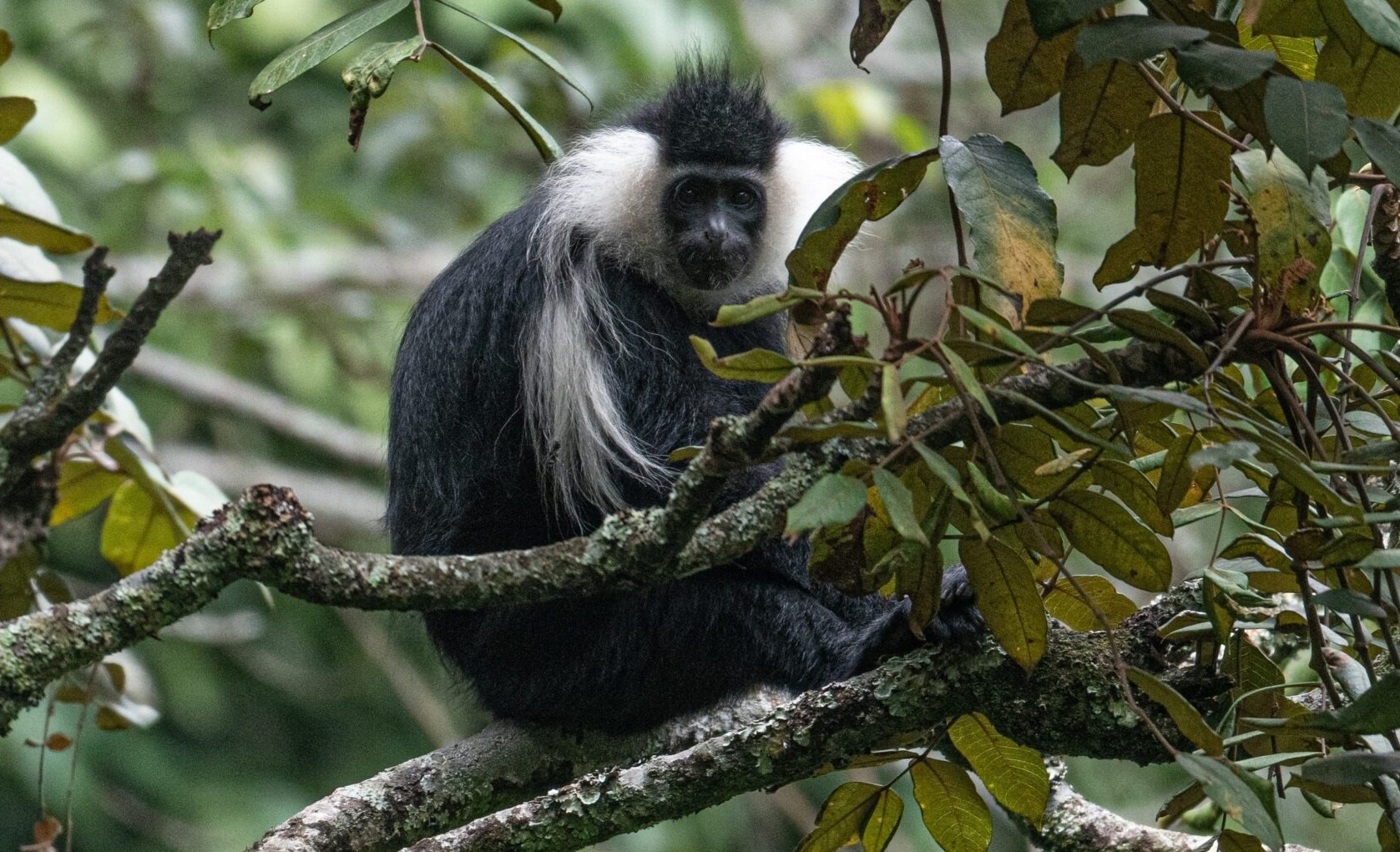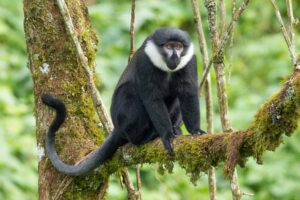Rwanda has long gained recognition as a destination for mountain gorilla trekking, yet the country supports a far wider spectrum in regards to the primates of Rwanda.
Its forests, wetlands, and savannah environments sustain species that reflect ecological variety and conservation depth beyond a single attraction.
This article highlights the primates that shape Rwanda’s wildlife identity, apart from gorillas.
You will see how golden monkeys, chimpanzees, colobus, and other monkeys contribute to both research and tourism.
The aim is straightforward: to broaden your understanding of Rwanda’s primate wealth and guide attention to habitats that reward deeper exploration.
After all, why limit focus when the country holds such scientific and experiential significance?
Overview of the Primates of Rwanda and their Diversity
The primates of Rwanda are diverse and cover an impressive range, considering its small size. Current records place the figure at over 13 primate species distributed across its forests and savannahs.
This range includes great apes such as chimpanzees, colobines like the black-and-white colobus, cercopithecines including golden monkeys and blue monkeys, and the olive baboon found in open habitats.
Each represents a distinct ecological role and evolutionary lineage.
Nyungwe Forest National Park in the southwest stands as the most important reservoir for primates in Rwanda.
Its 1,019 square kilometres of montane rainforest provide habitat for 13 primate species, including one of the largest recorded troops of black-and-white colobus in Africa, sometimes exceeding 400 individuals.
Chimpanzees in Nyungwe move in fluid communities, often spread across different forest sectors, while grey-cheeked mangabeys and L’Hoest’s monkeys occupy lower strata of the canopy.
Such concentrations highlight Nyungwe as a centre for primate research and conservation.
Volcanoes National Park in the north holds its primate distinctiveness. Beyond mountain gorillas, this park protects golden monkeys, which occur in high-altitude bamboo stands rarely utilised by other primates.
The smaller Gishwati-Mukura National Park, although only about 34 square kilometres, shelters chimpanzees and golden monkeys, offering a reminder of how fragmented habitats still carry significant conservation weight.
Meanwhile, Akagera National Park, with its mosaic of savannah, woodland, and wetland systems, supports olive baboons and vervet monkeys, primates adapted to more open and seasonal environments.
The primates of Rwanda contribute to ecosystem stability by dispersing seeds, aiding forest regeneration, and maintaining balances within predator-prey relationships.
Their presence is both a biological marker and a tourism asset.
When you explore Rwanda’s protected areas, you are not only encountering emblematic species but also engaging with ecological processes that underpin forest survival.
That thought alone changes how one appreciates their significance, doesn’t it?
Golden Monkeys (Cercopithecus kandti)
Golden monkeys, Cercopithecus kandti, are a subspecies of the blue monkey distinguished by their striking golden-orange fur on the flanks and back.
They belong to the Cercopithecidae family, a group widely distributed across Africa, yet golden monkeys are geographically restricted, giving them conservation and tourism prominence in the Albertine Rift.
Within Rwanda, golden monkeys inhabit two main areas. Volcanoes National Park supports the largest and most accessible population, concentrated in the bamboo forests along the park’s lower slopes.
Gishwati-Mukura National Park also shelters smaller groups within its mixed montane forest.
Both sites lie within the Albertine Rift’s high-altitude ecosystems, placing golden monkeys within habitats of global ecological importance.
Their behaviour is highly arboreal, though they frequently descend to feed on bamboo shoots, leaves, and fruits. Troops vary from 30 to more than 100 individuals, moving collectively in search of food resources.
They exhibit strong site fidelity during the bamboo growing season, often returning to the same groves repeatedly. Vocal communication and coordinated group movements demonstrate a complex social structure, although studies on their behaviour remain fewer compared to other primates.
Golden monkey trekking has become an established activity in Volcanoes National Park, with permits regulated by the Rwanda Development Board.
Groups are habituated for tourism, allowing visitors to observe them at close range for one hour.
If you plan to extend your wildlife interests beyond gorillas, this experience provides an opportunity to witness primates that are both rare and ecologically specialised.
Chimpanzees (Pan troglodytes)
Chimpanzees, Pan troglodytes, are the closest living relatives to humans, sharing around 98 per cent of our DNA.
They occur across equatorial Africa in fragmented populations, classified into four subspecies.
Rwanda shelters the central chimpanzee, whose populations are centred in two protected forests.
Nyungwe Forest National Park is the principal site, sustaining an estimated population of around 500 individuals.
The park’s size, over 1,000 square kilometres, allows chimpanzee communities to spread widely across different forest sectors.
Gishwati-Mukura National Park holds a smaller group of approximately 20 to 30 individuals.
Although fragmented, these chimpanzees represent a critical genetic link between populations in the eastern Democratic Republic of Congo and Uganda.
Chimpanzees live in fission-fusion societies, meaning communities split into smaller subgroups that change composition daily.
Males typically remain in their natal groups, while females often migrate to other groups, facilitating genetic exchange.
They communicate through complex vocalisations, facial expressions, and gestures.
Tool use is well documented, with individuals observed stripping leaves from twigs to fish termites or using sticks to extract honey.
Hunting of colobus monkeys and small duikers also demonstrates their cooperative strategies, sometimes involving several males at once.
Chimpanzee tracking in Nyungwe offers structured opportunities for visitors to observe habituated groups.
The experience begins at dawn, when tracking teams follow vocalisations and nest sites to locate communities.
Permits are issued by the Rwanda Development Board, with regulated group sizes ensuring minimal disturbance.
If you decide to undertake this activity, expect unpredictable movement across steep valleys and high ridges. It can be both strenuous and rewarding when a chimpanzee appears only a few metres away.
Beyond tourism, Rwanda’s chimpanzees carry broader conservation importance. Their presence maintains ecological processes such as seed dispersal, which secures the regeneration of large forest trees.
Colobus Monkeys
Colobus monkeys belong to the genus Colobus, a group of arboreal primates found across Africa.
Rwanda’s most prominent species is the Angola black-and-white colobus, Colobus angolensis ruwenzorii.
Distinctive in appearance, they display long white mantles along the shoulders and tails that contrast with their black fur, making them visually unmistakable in forest canopies.
Nyungwe Forest National Park is the centre of colobus distribution in Rwanda.
Here, one of the largest recorded troops in Africa, numbering up to 400 individuals, moves collectively through the canopy.
Such aggregations are unusual among primates and give Nyungwe particular scientific and tourism value. Smaller groups also occur in Gishwati-Mukura, though they are less studied and less habituated for observation.
Colobus monkeys live in cohesive social groups, typically led by one or more dominant males.
They feed primarily on young leaves, supplemented by fruits and seeds when available. By consuming and dispersing plant material, they influence regeneration cycles within forest ecosystems.
Their specialised stomachs allow the digestion of fibrous plant matter, which positions them as critical herbivores in montane forests.
Visitors to Nyungwe can observe colobus on guided treks that focus specifically on locating these large troops.
Sightings usually involve watching dozens of individuals leap across branches, their long white tails streaming behind them.
For you as a visitor, the experience illustrates primate behaviour on a scale rarely seen elsewhere. It is not just an observation of a species but of coordinated ecological adaptation within the forest canopy.
The conservation of colobus monkeys strengthens Rwanda’s ecological profile. Their continued survival depends on large, intact forests, which in turn protect watershed systems and carbon stocks.
In this way, colobus conservation intersects with broader environmental priorities, making them significant not only for tourism but also for national ecological stability.
Other Monkey Species
Beyond the iconic primates, Rwanda shelters several lesser-known monkeys that add depth to its primate community.
While not always central in tourism marketing, they shape ecological balance and broaden the observational value of protected areas.
a. L’Hoest’s Monkey (Cercopithecus lhoesti)
L’Hoest’s monkey is identifiable by its dark coat, white throat ruff, and expressive facial markings.
In Rwanda, populations occur mainly in Nyungwe Forest and Gishwati-Mukura.
They are ground-feeding primates, often seen in small groups of 10 to 20 individuals led by a dominant male.
Diets consist of fruits, young leaves, and insects, which positions them as flexible omnivores.
Their shy nature makes observation less predictable, although sightings are frequent during forest hikes.
b. Grey-Cheeked Mangabey (Lophocebus albigena)
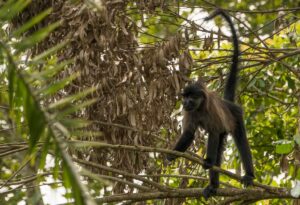 Grey-cheeked mangabeys resemble baboons in facial structure but are smaller and more arboreal.
Grey-cheeked mangabeys resemble baboons in facial structure but are smaller and more arboreal.
They have a dark coat with greyish cheek hairs that give the species its name.
Nyungwe Forest hosts healthy populations, often observed moving in large troops through the canopy.
Their diet relies heavily on fruits, though seeds and shoots form part of seasonal feeding.
They vocalise loudly, producing calls that carry across valleys, which helps track them during guided walks.
c. Blue Monkey (Cercopithecus mitis)
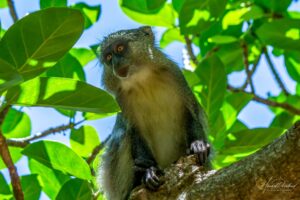 The blue monkey, widespread in central and eastern Africa, inhabits Nyungwe, Gishwati-Mukura, and Volcanoes National Park.
The blue monkey, widespread in central and eastern Africa, inhabits Nyungwe, Gishwati-Mukura, and Volcanoes National Park.
Despite its name, the fur appears greyish with a bluish sheen visible under sunlight.
Groups usually number 20 to 40 individuals, showing cohesive female-led structures. Blue monkeys consume fruits, leaves, and small invertebrates, thriving in both primary and secondary forest zones.
Their adaptability allows visitors regular sightings during hikes, often near park trails.
Collectively, these monkeys highlight the ecological range Rwanda sustains.
For you as a visitor, they provide observations that complement the higher-profile species, turning a trek into a layered experience of primate diversity.
d. Olive Baboons
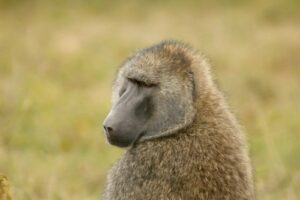 Olive baboons, Papio anubis, stand apart from Rwanda’s other primates for their terrestrial lifestyle and their strikingly complex social systems.
Olive baboons, Papio anubis, stand apart from Rwanda’s other primates for their terrestrial lifestyle and their strikingly complex social systems.
Their olive-tinted coats and elongated muzzles make them recognisable at a distance, while their behaviour keeps them constantly in view across open habitats.
In Rwanda, they are most numerous in Akagera National Park, where they roam the woodlands and savannah.
Unlike colobus or mangabeys, baboons spend much of their time on the ground, travelling in cohesive troops that can exceed 100 individuals.
Such visibility makes them one of the easiest primates to observe in East Africa’s savannah environments.
Social dynamics among baboons are unusually intricate. Males rise and fall in rank depending on alliances, rather than physical strength alone.
Grooming sessions serve both hygienic and political functions, cementing bonds between individuals that may later determine access to mates or protection.
Even infant care, often thought to rest solely with mothers, is sometimes shared by adult males who carry and protect young. These behaviours illustrate the sophistication of baboon societies.
Their vocal repertoire is another distinctive feature. Loud barks, grunts, and alarm calls echo across valleys, warning troops of predators or coordinating group movements.
Alongside vocalisations, they employ body postures and facial expressions that communicate submission, aggression, or reassurance.
Observing such interactions during a safari in Akagera reveals primate communication in its most overt form.
Olive baboons also interact with human-modified environments more frequently than any other primate in Rwanda.
At the edges of Akagera, they forage near cultivated fields, a reminder that conservation is not only about wilderness but also about negotiating boundaries between people and primates.
For you as a visitor, seeing them on the move across open grassland or perched on roadside rocks provides a direct window into primate adaptability rarely matched by forest-dwelling species.
Conclusion
When you consider Rwanda’s wildlife portfolio, it is easy to see why the country commands global attention.
Mountain gorillas may symbolise conservation achievement, yet the presence of chimpanzees, golden monkeys, colobus, mangabeys, and baboons reflects a primate spectrum of extraordinary ecological and tourism value.
Each species broadens understanding of forest and savannah systems, each encounter sharpening appreciation of how carefully managed these environments must remain.
For you as a professional observer, planner, or visitor, the task is to look beyond singular attractions and grasp the integrated conservation picture Rwanda presents.
Protecting primates here involves national policy, local benefit-sharing, and regulated tourism, all of which create an environment where species persist while contributing to economic and scientific outcomes.

